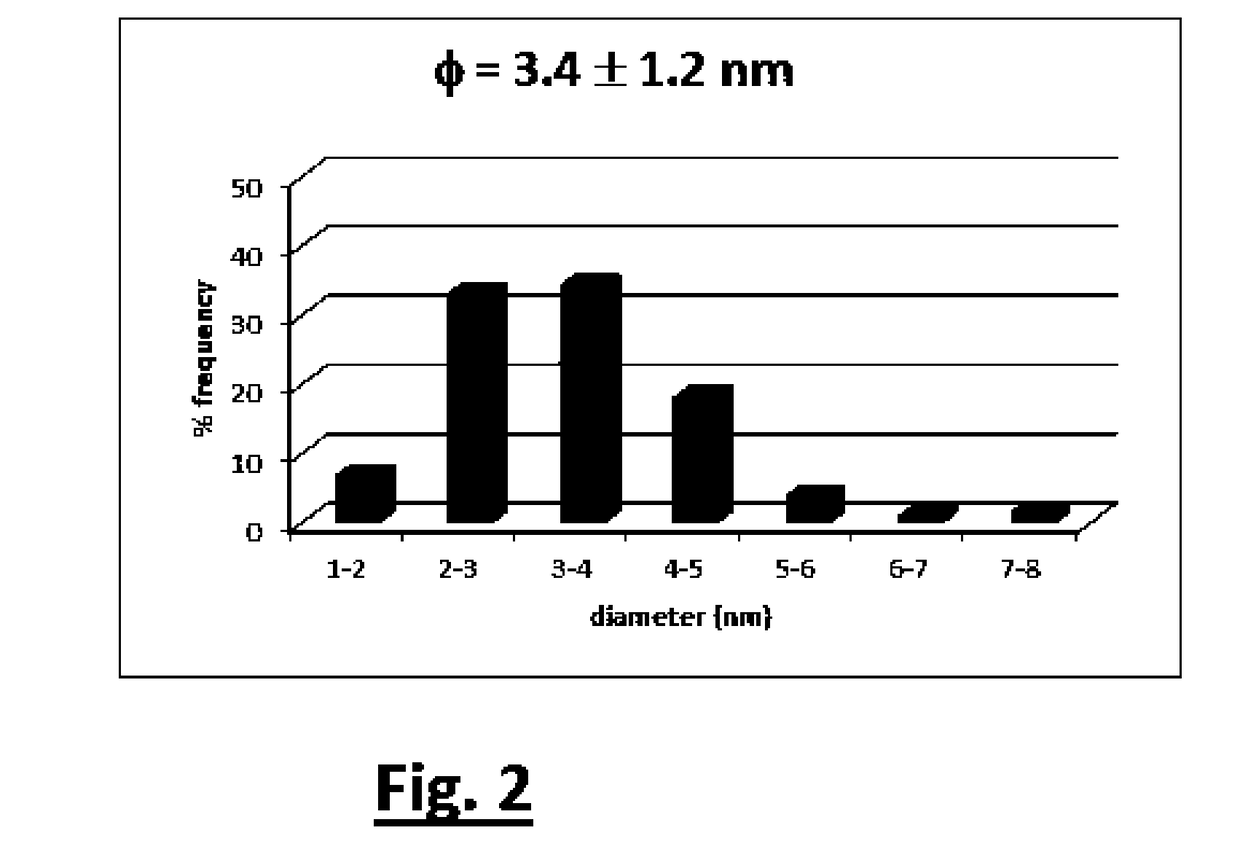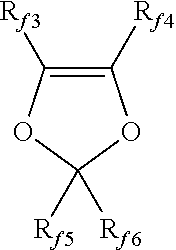One-pot process using heterogeneous catalyst
- Summary
- Abstract
- Description
- Claims
- Application Information
AI Technical Summary
Benefits of technology
Problems solved by technology
Method used
Image
Examples
example i
Preparation of Ru-Containing Catalyst
[0110]In a typical procedure, the dry polymeric material Aquivion® PFSA (250 mg, supplied by Solvay Specialty Polymers Italy, powder form, PSD 500-700 micron, composition: 79 mol / mol % TFE and 21 mol / mol % SFVE) was added to a flask containing a degassed brown solution of ruthenium(III) nitrosyl nitrate (229 mL of Ru(NO)(NO3)x(OH)y nitric solution 1.5 wt % Ru, 0.036 mmol Ru, ratio Ru / sulfonic group =1 / 10.6) in deionised water (14.0 mL). The mixture was degassed with 3 cycles vacuum / nitrogen and then stirred at room temperature for 2 h using an orbital stirrer. The solid material, initially white, became immediately brown, while the solution color faded. The solid was then decanted and the colourless solution was removed by syringe. The solid was washed with degassed, deionised water (3×25 mL) before being dried under high vacuum at 60° C. overnight. The resulting metallated Aquivion® PFSA obtained as brown powder was stored under nitrogen.
[0111]S...
example ii
Preparation of Rh-Containing Catalyst
[0113]A degassed orange solution of [Rh(NBD)2]BF4 (32.9 mg, 0.088 mmol, ratio SO3H / Rh=10.5) in THF (17.0 mL) was added under nitrogen via syringe to a degassed suspension of (600 mg) in THF (17.0 mL). The mixture was stirred at room temperature for 24 h using an orbital stirrer. The resulting solid material was decanted, washed with THF (3×25 mL) and diethyl ether (20 mL) before being dried under high vacuum overnight. The metal-containing Aquivion® orange powder thus obtained was stored under nitrogen.
[0114]Solid NaBH4 (100 mg) was then added under nitrogen to a degassed suspension of the metal-containing resin in water (15 mL). The mixture was allowed to react for 24 h with orbital stirring. After that time, the solid was decanted, washed with degassed water (4×25 mL), and dried under high vacuum at 50° C. overnight. The resulting product obtained as black powder was stored under nitrogen.
[0115]A rhodium loading of 1.41 wt % was measured from I...
example iii
Preparation of Pd-Containing Catalyst
[0116]In a typical procedure, a degassed brownish solution of Pd(NO3)2 (23.4 mg, 0.088 mmol, ratio SO3H / Rh=10.5) in water (17.0 mL) was added under nitrogen via syringe to a degassed suspension of Aquivion® PFSA (600 mg) in water (17.0 mL). The mixture was stirred at room temperature for 24 h using an orbital stirrer. The resulting solid material was decanted and washed with degassed water (3×25 mL). Water (25 mL) was then added under nitrogen and H2 was bubbled through the suspension at 1 bar for 2 h with stirring. The solid obtained was washed with degassed water (2×25 mL) before being dried under high vacuum at 50° C. overnight. The resulting resin obtained as black powder was stored under nitrogen.
[0117]A palladium loading of 1.33 wt % was measured from ICP-OES analysis, corresponding to 86.9% metal uptake.
PUM
| Property | Measurement | Unit |
|---|---|---|
| Temperature | aaaaa | aaaaa |
| Particle size | aaaaa | aaaaa |
| Nanoscale particle size | aaaaa | aaaaa |
Abstract
Description
Claims
Application Information
 Login to View More
Login to View More - R&D
- Intellectual Property
- Life Sciences
- Materials
- Tech Scout
- Unparalleled Data Quality
- Higher Quality Content
- 60% Fewer Hallucinations
Browse by: Latest US Patents, China's latest patents, Technical Efficacy Thesaurus, Application Domain, Technology Topic, Popular Technical Reports.
© 2025 PatSnap. All rights reserved.Legal|Privacy policy|Modern Slavery Act Transparency Statement|Sitemap|About US| Contact US: help@patsnap.com



